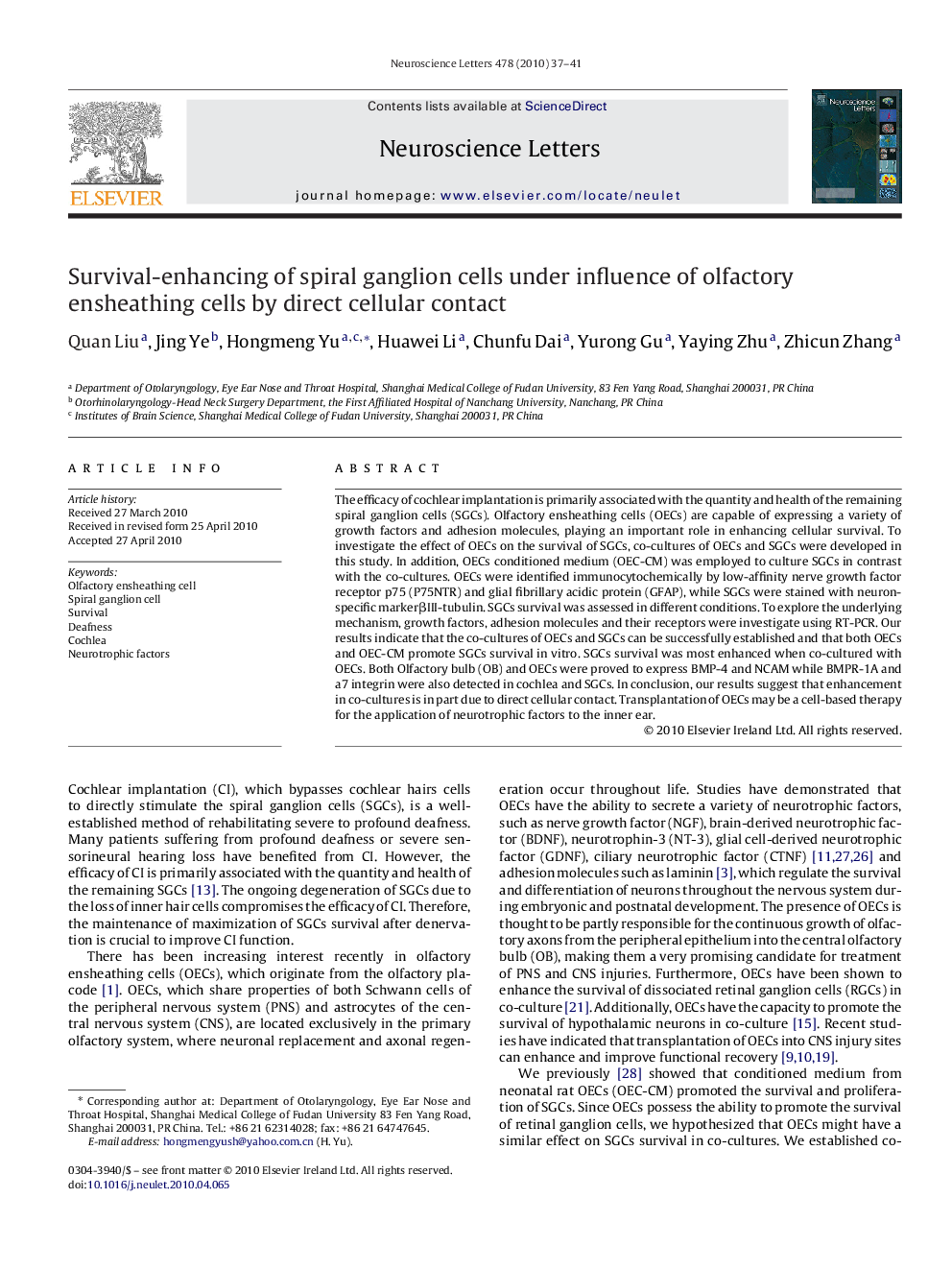| Article ID | Journal | Published Year | Pages | File Type |
|---|---|---|---|---|
| 4345785 | Neuroscience Letters | 2010 | 5 Pages |
The efficacy of cochlear implantation is primarily associated with the quantity and health of the remaining spiral ganglion cells (SGCs). Olfactory ensheathing cells (OECs) are capable of expressing a variety of growth factors and adhesion molecules, playing an important role in enhancing cellular survival. To investigate the effect of OECs on the survival of SGCs, co-cultures of OECs and SGCs were developed in this study. In addition, OECs conditioned medium (OEC-CM) was employed to culture SGCs in contrast with the co-cultures. OECs were identified immunocytochemically by low-affinity nerve growth factor receptor p75 (P75NTR) and glial fibrillary acidic protein (GFAP), while SGCs were stained with neuron-specific markerβIII-tubulin. SGCs survival was assessed in different conditions. To explore the underlying mechanism, growth factors, adhesion molecules and their receptors were investigate using RT-PCR. Our results indicate that the co-cultures of OECs and SGCs can be successfully established and that both OECs and OEC-CM promote SGCs survival in vitro. SGCs survival was most enhanced when co-cultured with OECs. Both Olfactory bulb (OB) and OECs were proved to express BMP-4 and NCAM while BMPR-1A and a7 integrin were also detected in cochlea and SGCs. In conclusion, our results suggest that enhancement in co-cultures is in part due to direct cellular contact. Transplantation of OECs may be a cell-based therapy for the application of neurotrophic factors to the inner ear.
